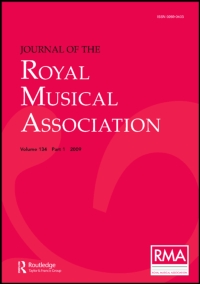No CrossRef data available.
Article contents
Extract
I have undertaken a difficult and delicate task, in proposing to read before an important musical body a paper treating of Music in Cathedrals. Difficult, because of the risk one runs in yielding to a temptation to be either historical or polemical; and delicate, as it is almost impossible to speak on the matters necessarily connected with my subject without calling for the assistance of one or both of these qualities in order ‘to point the moral’ or illustrate the remarks I shall have to offer. The difficulty and the delicacy of the subject will be fully understood by those who at any time have been connected with any one of our ancient cathedrals.
- Type
- Research Article
- Information
- Copyright
- Copyright © Royal Musical Association, 1876
References
∗ Subsequent measurement, showed it to be C 478·8.Google Scholar
† Mr. Ellis has since ascertained that the pitch of St. Paul's organ at Easter 1877 was C 533·2, just, a trille flatter than Broadwood's medium pitch, and about two commas above French pitch. Also, that the pitch of Westminster Abbey Organ in May 1877 was A 442, or C 525·6, being about, half a comma sharper than French pitch. Both are very much flatter than our present concert pitch, C 545, or A 458. Mr. Eills's researches on pitch, with full tables, will be found in the Journal of the Society of Arts. for 25th May 1877.Google Scholar


